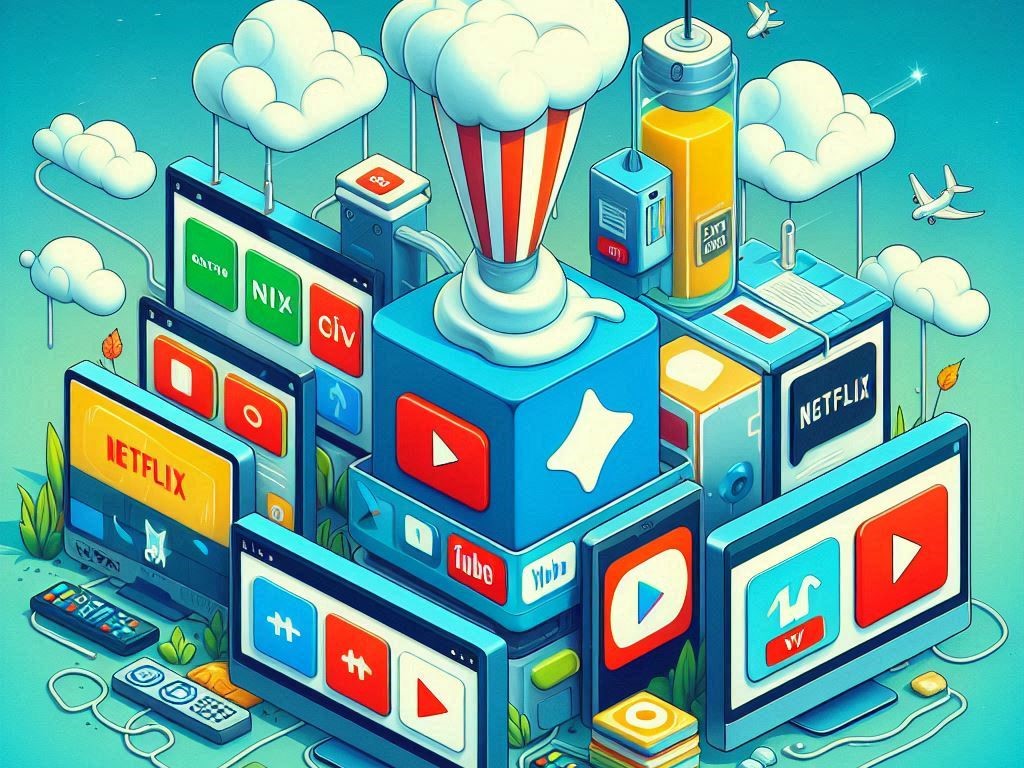By: The BitMar Team.
Image Source: Bing Image Creator.
The Evolution of Pricing Strategies:
Streaming services have revolutionized the way in which we consume content, but their pricing models have often been a subject of debate. As these platforms have grown, in popularity... their pricing strategies have evolved; often reflecting changes in the market, technological advancements, and consumer preferences.
The cost of content acquisition is one of the key factors that is influencing streaming prices. Streaming services often need to secure exclusive rights – to popular shows, and movies – which can drive up costs. To offset these expenses... platforms may increase subscription fees; and/or introduce additional tiers, with premium features.
Another factor that is impacting pricing, is: competition. As the number of streaming services has grown... platforms have had to compete, for subscribers; by offering attractive pricing plans. This has led to a variety of pricing models, including: monthly subscriptions, annual plans, and bundled packages.
Comparing Streaming, to Cable TV:
While streaming services have disrupted the traditional Cable TV industry, their pricing models are not entirely dissimilar. Both – Cable, and streaming – providers offer tiered packages; that vary, in price; based on the channels, or content, that is included. However; streaming services provide more flexibility; allowing subscribers to customize their plans, based on their (individual) preferences.
The potential for hidden fees is one significant difference; between Cable, and streaming. Cable providers may charge additional fees, for equipment rental, premium channels, and/or taxes. While streaming services generally have fewer hidden fees... some streaming providers may charge extra fees; for features, like: HD quality, and/or offline downloads.
Future Trends, in Streaming Pricing Models:
As the streaming landscape continues evolving... we can expect to see further innovations, in pricing models. One potential trend, is: the emergence of dynamic pricing; wherein subscription fees fluctuate, based on factors—such, as: demand, time of year, and/or viewing habits. This approach could allow streaming services to optimize their revenue, while providing consumers with more personalized pricing options.
Another trend to watch, is: the growth of advertising-supported streaming. While many popular streaming services are subscription-based... some providers are experimenting, with ad-supported models. This could lead to lower subscription fees, for consumers; but it may (also) introduce more interruptions, to the viewing experience.
Conclusion:
The pricing strategies of streaming services have undergone significant changes, in recent years. As the industry continues to evolve... experiencing how platforms adapt – to changing market conditions, and consumer preferences – may be very interesting. By understanding the factors that influence streaming prices... consumers can make informed decisions; about which services best meet their needs, and budget.
Next-generation streaming platforms – like: BitMar – may provide you the most affordable form of on-demand streaming entertainment. BitMar provides all-in-one streaming service, for life, for a one-time payment. It can connect you to millions of on-demand movies, TV shows, channels, videos, and songs (from many different sources on the Web), on the screens that you already own. In fact, BitMar provides access to more movies, and TV shows, than: Cable, Satellite, Netflix, Disney Plus, Max/HBO Max, Amazon Prime Video, Apple TV+, Peacock, and Hulu – combined – and more songs, than: Pandora, Spotify, Amazon Prime Music, and Apple Music—combined. You may learn more, at: BitMar.com/.

